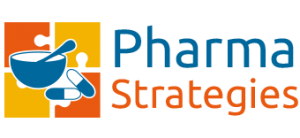- EMA CHMP positive opinion in non-radiographic axial spondyloarthritis (nr-axSpA) paves way for fourth indication in Europe, and is based on Phase III PREVENT data1
- If approved, Cosentyx would become the first fully-human IL-17A inhibitor indicated for patients in Europe with nr-axSpA
- There are approximately 1.7 million patients with nr-axSpA in the top five EU countries and US, which forms part of the axial spondyloarthritis (axSpA) disease spectrum2
- Cosentyx is …
- Zolgensma® (onasemnogene abeparvovec), a one-time administered gene therapy, has been recommended for European Commission (EC) conditional approval for patients with spinal muscular atrophy (SMA) and a clinical diagnosis of Type 1 or SMA patients with up to three copies of the SMN2 gene
- Zolgensma has demonstrated significant and clinically meaningful therapeutic benefit in presymptomatic and symptomatic SMA, including prolonged event-free survival and achievement of motor milestones unseen in natural history of the disease and to date …
As the coronavirus (COVID-19) situation continues to evolve, our primary concern at Novartis remains the health and safety of our associates and patients globally. With that in mind, this week Novartis announced a range of additional measures to protect and support our associates around the world.
Announced this week, Novartis has extended its guidance for all Novartis associates within Europe, US and Canada to work from home until May 1, 2020, with the exception of those working in laboratories, manufacturing sites and in the field. We continue to assess the situation and adapt …
Every cell in the human body is packed with proteins. These large molecules float around, bump into one another and make the stuff of life happen. They turn fuel into energy. They dispose of trash. They read genetic codes and coax cells to divide.
In some cells, naturally occurring “molecular glues” float among these proteins. Like crafty matchmakers, these small molecules stick proteins together. By doing so, they may change a cell’s destiny.
Drug hunters at the Novartis Institutes for BioMedical Research (NIBR) think these tiny matchmakers also have the potential to change …
Follow us on Facebook
ADDRESS – ZIMBABWE
Suite 204, Block 1
Long Cheng Plaza
Mutley Bend, Belvedere
Harare, Zimbabwe
ADDRESS – ZAMBIA
Plot 43504
Apex Chalala
Off Kasama Road
Lusaka Zambia
